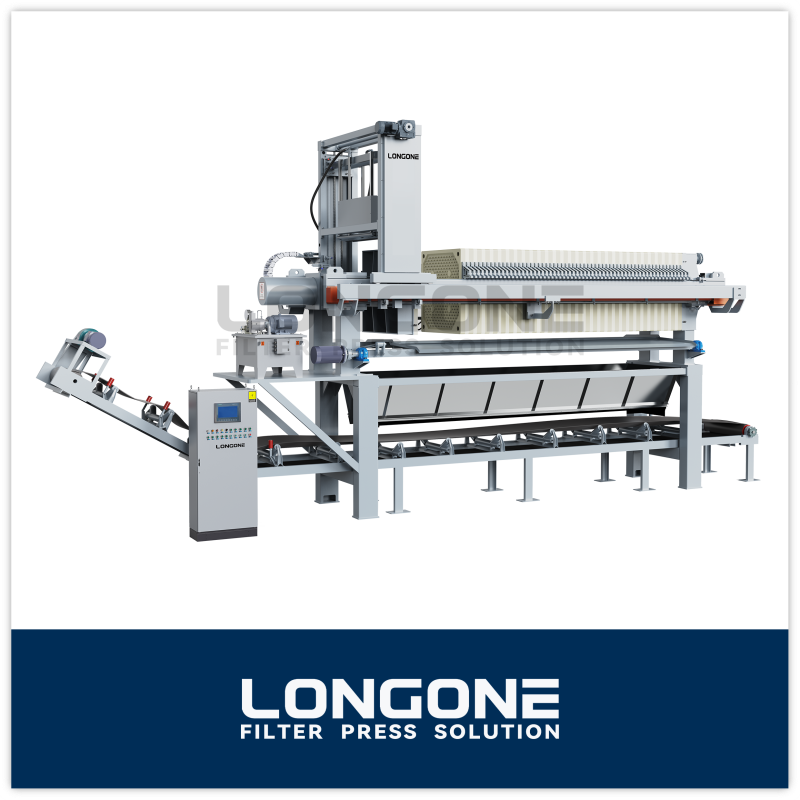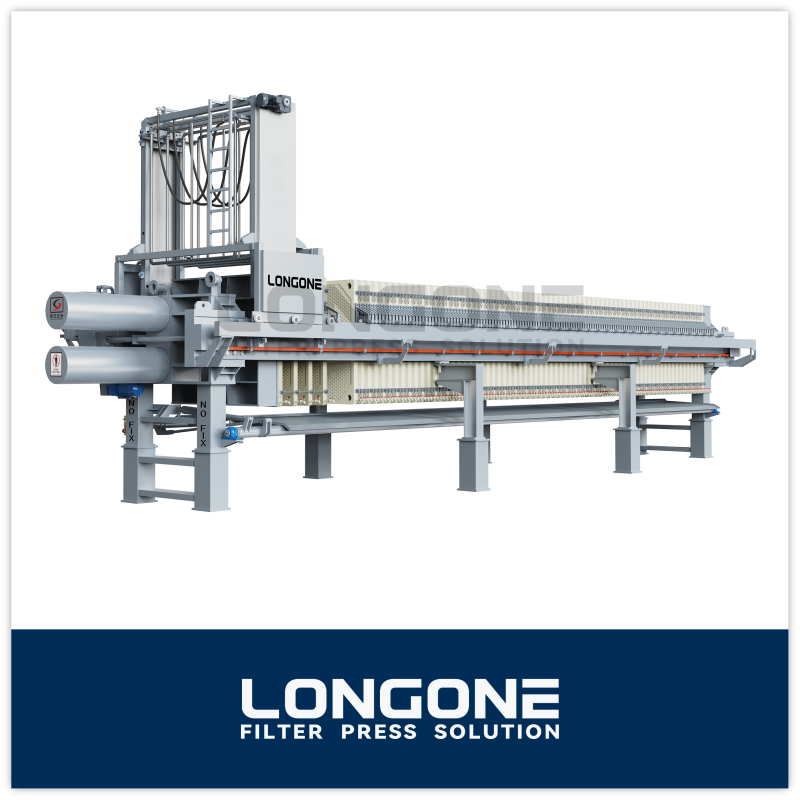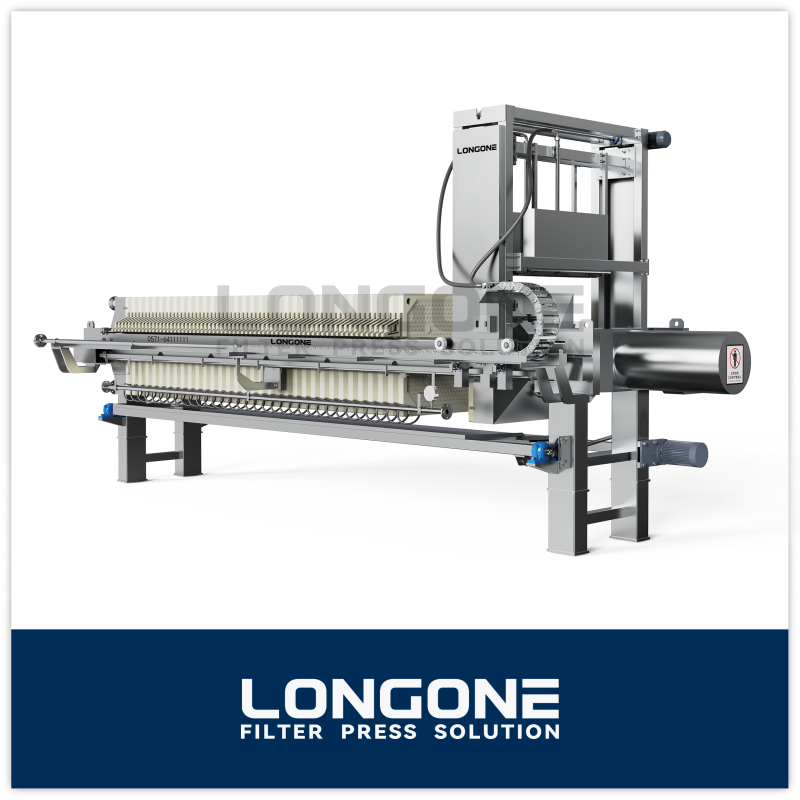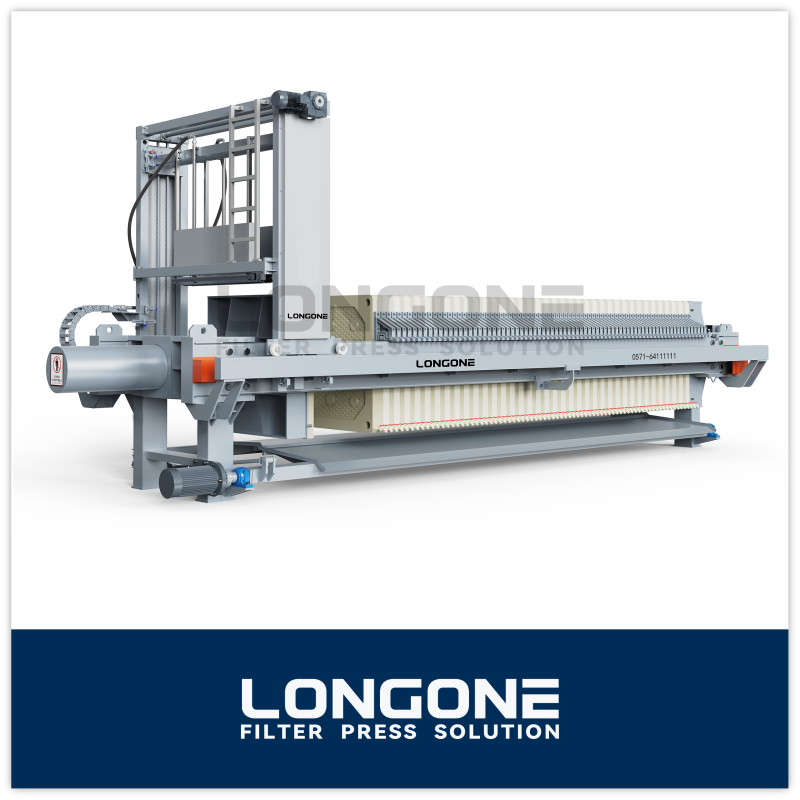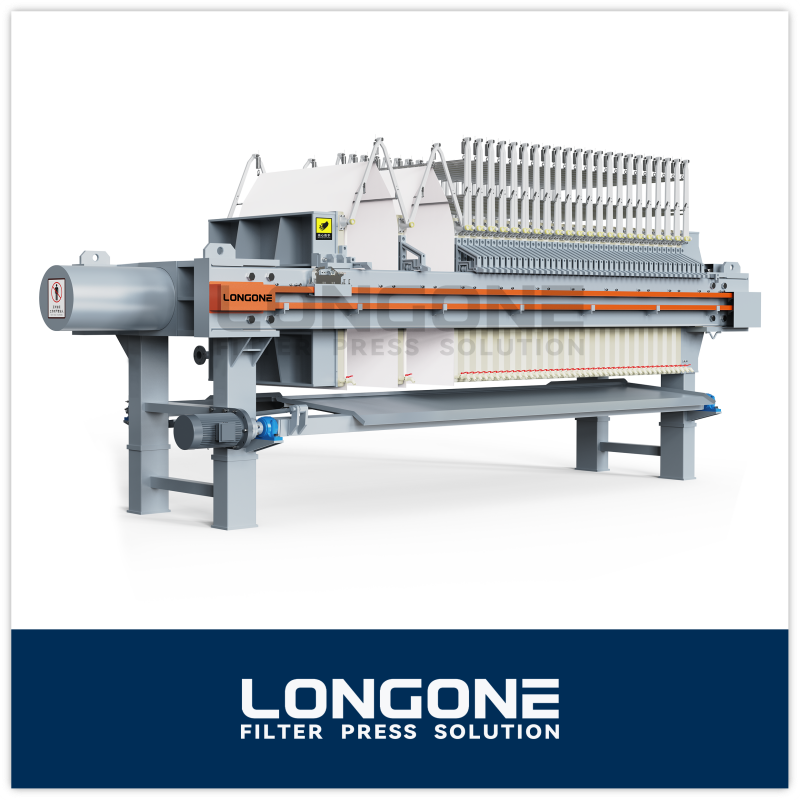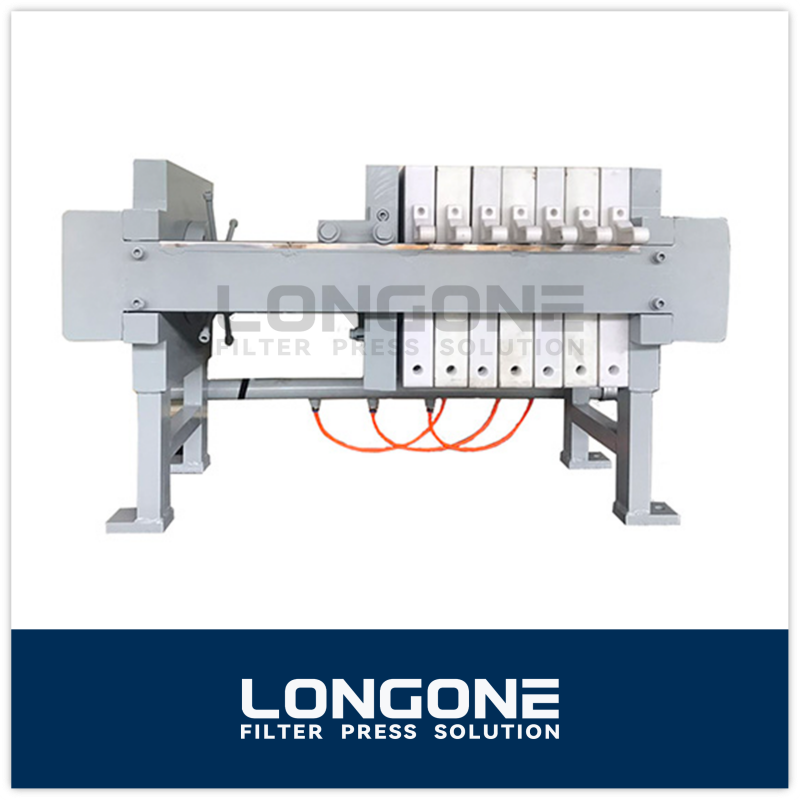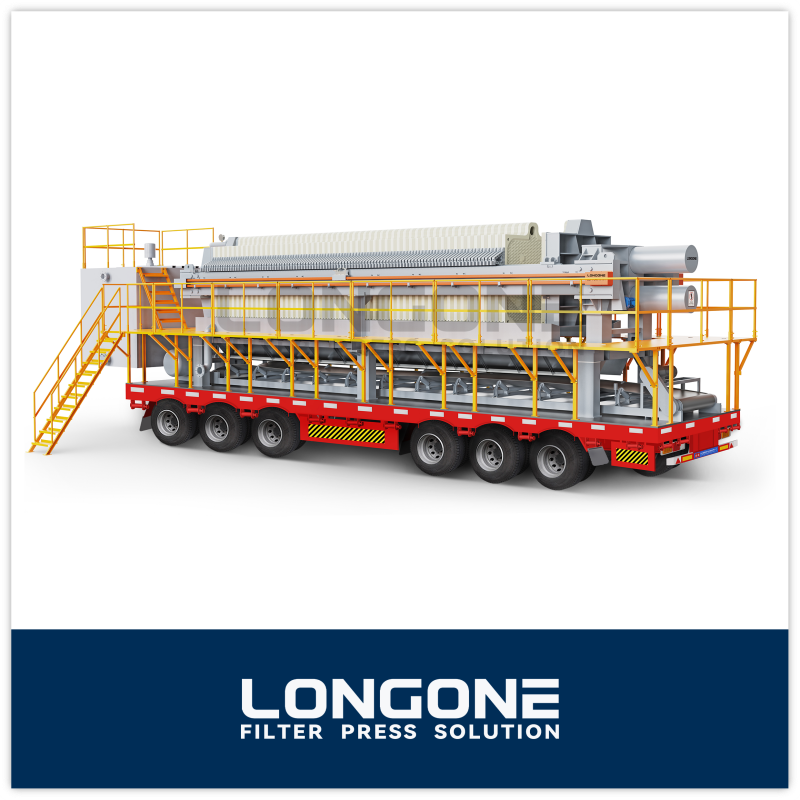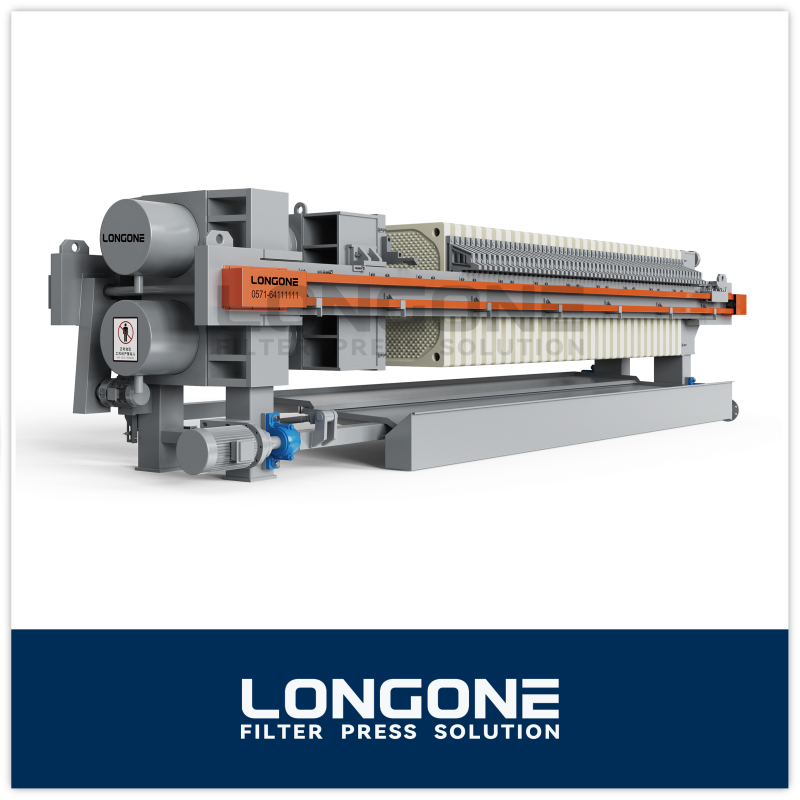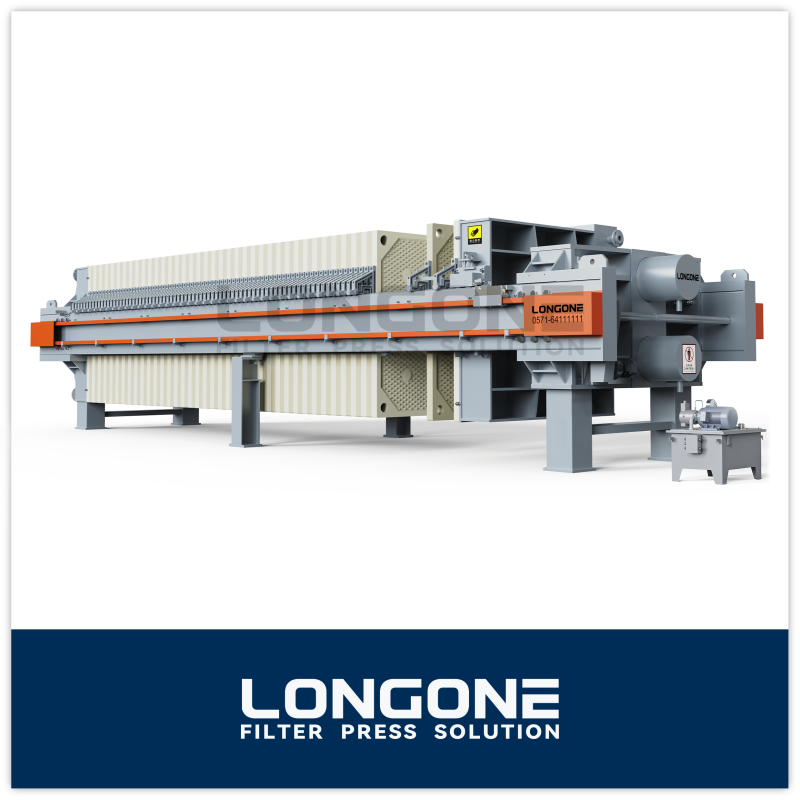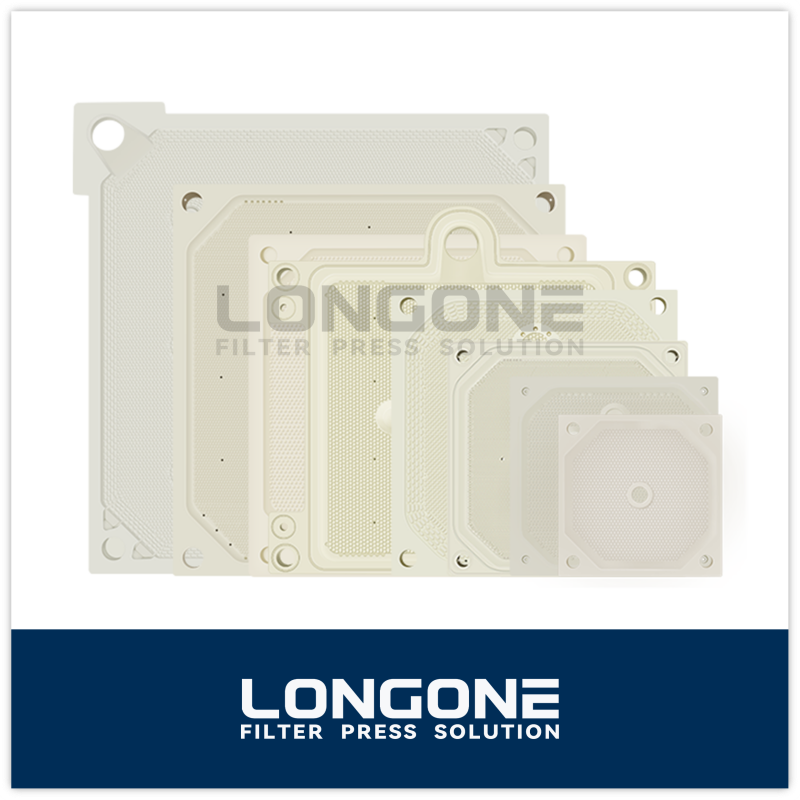Longone, a prominent supplier of filter press solutions for sludge management, continues to lead the industry with its advanced dewatering technologies. As environmental regulations become stricter and industries pursue more sustainable practices, the efficiency of sludge dewatering systems has become crucial in wastewater treatment. In this context, Longone’s sludge filter press stands out as an exceptionally effective solution compared to other dewatering systems.
Advantages of Filter Press Machines for Sludge Dewatering:
Longone’s sludge press machine for sludge treatment is designed to provide unparalleled performance, offering several significant benefits over other dewatering methods:
High Solids Content: Sludge filter presses are renowned for generating sludge with a considerably higher solids content compared to alternatives like centrifuges or belt presses. This leads to a reduction in sludge volume, lower disposal costs, and easier handling.
Energy Efficiency: Longone’s Sludge filter press operates with lower energy consumption than other dewatering technologies. This not only makes it a cost-effective option but also an environmentally friendly choice for industrial applications.
Consistent Performance: Thanks to its precise engineering, Longone’s sludge press machine ensures reliable performance, delivering uniform cake dryness and minimizing downtime for maintenance.
Versatility: The sludge filter press is adaptable to a wide variety of sludge types, including those with high organic content or complex chemical compositions.
Comparison with Other Dewatering Systems:
While other systems such as centrifuges and belt presses offer certain advantages, they often fall short in key areas:
Centrifuges generally require more energy and produce sludge with a lower solids content, leading to higher operational costs and a greater environmental impact.
Belt Presses are less effective in achieving the high solids content required for efficient disposal and may struggle with more complex sludge types.
In contrast, Longone’s filter press for sludge dewatering combines efficiency, reliability, and adaptability, making it the preferred option for industries looking to enhance their sludge management processes.
How the Filter Press for Sludge Dewatering Works and Its Entire Process:
A sludge dewatering filter press is a vital component in wastewater management and various industrial processes, designed to efficiently dewater sludge by separating solid particles from liquids. This reduces the sludge volume and simplifies handling, transport, and disposal. Here’s a detailed look at how a Filter press for sludge dewatering operates and the overall dewatering process.
How a Filter Press for Sludge Dewatering Works:
A Sludge dewatering filter press operates on the principle of mechanical pressure filtration. It consists of a series of plates and frames that form multiple filtration chambers. Sludge is pumped into these chambers, where hydraulic pressure forces the liquid through filter cloths, leaving the solid particles behind. This results in a dense, dry sludge cake and a significant reduction in liquid content.
The Entire Dewatering Process
Sludge Preparation:
Thickening: Sludge is often thickened before it enters the sludge press machine to increase its solids content. This can be done using methods like gravity thickening, dissolved air flotation, or centrifugation.
Conditioning: Chemical additives such as coagulants or flocculants may be added to the sludge to enhance particle aggregation, improving dewatering efficiency.
Feeding the Sludge:
The prepared sludge is pumped into the sludge press machine. Flow rate and pressure are carefully regulated to ensure optimal filtration performance.
Filtration:
Inside the filter press, sludge enters chambers created by alternating plates and frames. Hydraulic pressure forces the liquid through the filter cloth, while solids are trapped on the plates.
Multiple chambers operate simultaneously, allowing continuous operation. Some chambers may be in the filtration phase while others undergo cake discharge or cleaning.
Cake Formation:
Solids collected on the filter cloth form a compact sludge cake. The cake's thickness and dryness depend on the applied pressure and filtration duration.
The sludge press machine is designed to achieve high solids content, which reduces overall sludge volume and disposal costs.
Cake Discharge:
After achieving the desired dewatering level, the sludge press machine is opened, and the cake is mechanically discharged. This can be done manually or automatically, depending on the system.
The dewatered sludge cake is then collected for further processing, disposal, or use as a biosolid in agriculture.
Key Components of a Filter Press for Sludge Dewatering
Filter Plates and Frames: These create the filtration chambers for sludge dewatering.
Filter Cloths: Permeable membranes that allow liquid to pass while retaining solids.
Pumps: Provide the hydraulic pressure necessary for the filtration process.
Automation Controls: Manage operational cycles including loading, filtration, cake discharge, and cleaning.
Seals and Gaskets: Prevent leakage between plates and maintain system integrity under pressure.
About Longone:
Longone is a leading manufacturer and supplier of filter press machines, specializing in advanced solutions for sludge treatment and dewatering. Committed to innovation and sustainability, Longone offers state-of-the-art equipment designed to meet the evolving demands of various industries worldwide.


